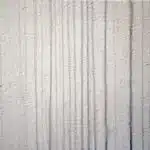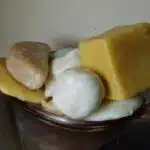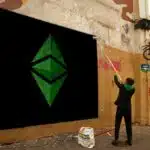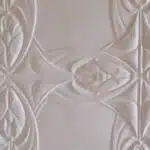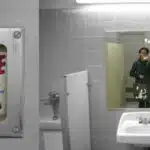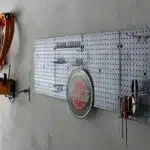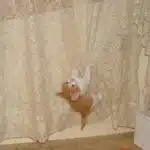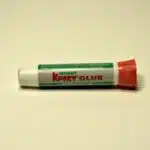Command strips and hooks have become a popular solution for hanging items on walls without the need for drilling or damaging surfaces. These adhesive products are easy to use and can hold a variety of weights, making them ideal for organizing spaces around the home or office. However, removing command strips and hooks can be a challenge, as they are designed to stick firmly to surfaces. In this article, we will provide step-by-step instructions on how to remove command strips and hooks safely and effectively.
Whether you are moving out of a rental property or simply want to reposition your wall decor, it is important to remove command strips and hooks properly to avoid causing damage. Our guide will cover different methods for removing these adhesives from various surfaces, including painted walls, tiles, wood panels, and glass. By following our tips and tricks, you can avoid frustration and ensure that your walls remain in pristine condition after removing command strips and hooks.
Understanding The Adhesive Properties Of Command Strips And Hooks
Command strips and hooks are adhesive products designed to provide a temporary hold on surfaces such as walls, doors, and cabinets. Command strips and hooks have become increasingly popular due to their ease of use and the fact that they do not cause damage to the surface they are applied to. However, it is important to understand the adhesive properties of these products before attempting to remove them.
Adhesive strength tests have shown that command strips and hooks can hold up to a certain amount of weight depending on the size of the strip or hook used. It is important to note that while these products are designed for temporary use, they can still leave residue behind if not removed properly. This residue can be difficult to remove, especially if left on the surface for an extended period.
Preventing wall damage when removing command strips and hooks is crucial. Using excessive force or pulling at an incorrect angle can result in paint chipping, dents, or even holes in the wall. To avoid this damage, it is recommended that you read and follow the instructions provided by the manufacturer carefully. Additionally, preparing for removal by gathering necessary tools and materials can make the process easier and more efficient.
Preparing For Removal: Gathering Necessary Tools And Materials
After understanding the adhesive properties of command strips and hooks, it is important to prepare for their removal. This involves gathering necessary tools and materials to ensure a smooth removal process. One common mistake people make when removing command strips or hooks is pulling them off too quickly, which can damage walls or leave adhesive residue behind.
To avoid these issues, alternative removal methods should be considered. For example, using dental floss or fishing line to gently saw through the adhesive can help release the strip or hook without damaging the wall. Another option is using a hairdryer on a low heat setting to soften the adhesive before slowly pulling it off.
Testing the adhesive bond before attempting removal is also crucial. This can be done by pulling down on one corner of the strip or hook at a 45-degree angle to see how well it is adhered to the wall. If there is resistance, it may be necessary to use additional tools such as a putty knife or scraper to carefully remove it. By following these steps and taking precautions, you can successfully remove command strips and hooks without causing damage or leaving behind unwanted residue.
Testing The Adhesive Bond
Before attempting to remove a command strip or hook, it is important to test the adhesive bond. This will help you determine if it is safe to remove the strip or hook without damaging your wall or leaving residue behind. There are several testing methods that can be used to assess the strength of the adhesive bond.
One common testing method involves using a small piece of tape. Simply stick the tape onto the command strip or hook and then pull it off quickly. If the adhesive bond is weak, the strip or hook should come off easily without damaging your wall. However, if the bond is strong, you may need to use additional removal techniques.
Adhesive strength factors include surface type, temperature, humidity, and time elapsed since application. For example, surfaces that are porous or textured may require more adhesive strength than smooth surfaces. Additionally, high temperatures and humidity levels can weaken adhesives over time. It is important to take these factors into consideration when testing and removing command strips and hooks.
Now that you have tested the adhesive bond of your command strip or hook, you can move on to removing it safely and effectively. One effective technique for removal is pulling the strip or hook straight down from the wall at a 45-degree angle. This minimizes damage to both the wall and the adhesive backing of the strip or hook. Remember to always test before removing and take any necessary precautions based on surface type and environmental conditions.
Pulling The Strip Or Hook Straight Down
As you test the adhesive bond of your command strips and hooks, you might be wondering how to remove them without causing damage. Preventing damage is crucial because it can affect the overall appearance of your walls or surfaces. Luckily, there are alternative removal methods that you can use.
One method is to pull the strip or hook straight down. This technique requires a slow and steady pull, avoiding any jerky movements that may cause tearing. If the strip or hook seems to resist, try using dental floss to separate it from the surface gently. This method is ideal for removing lightweight items like picture frames or small decorations.
Another alternative removal method involves using a hairdryer to heat the adhesive. By warming up the adhesive with a hairdryer on low heat, it becomes easier to lift off the strip or hook without leaving behind any residue. It’s important to keep the hairdryer moving back and forth over the strip or hook’s surface for an even application of heat. Plus, this technique works well on heavier items that require more force for removal.
Incorporating these alternative removal methods into your routine will help you prevent damage caused by forcefully removing strips and hooks. When pulling them down, do so in a slow and steady manner while avoiding any jerky movements that could lead to tearing. For heavier items, consider using a hairdryer on low heat as an effective way of loosening up adhesive before pulling it away from surfaces.
Using A Hairdryer To Heat The Adhesive
Another way to remove command strips and hooks is by using a hairdryer. This method works by heating the adhesive until it becomes soft and easier to remove. Before starting, ensure that you have plugged in your hairdryer and set it to its highest heat setting.
To begin, hold the hairdryer approximately two inches away from the command strip for about 20-30 seconds. The heat will cause the adhesive to loosen up, making it easier to pull off. Be careful not to overheat the strip as this may cause damage to your walls.
Once you have heated up all the strips, use a plastic scraper or credit card to carefully pry them off from one corner. Do this slowly and gently so as not to damage your walls. If there are any remaining bits of adhesive residue left on your wall after removing the strip, use rubbing alcohol or an adhesive remover spray on a clean cloth to wipe them away easily.
Next, applying pressure and pulling slowly is another effective way of removing command strips and hooks without causing damage to your walls.
Applying Pressure And Pulling Slowly
Removing command strips and hooks can be a daunting task, but with the right approach, it can be done smoothly. Applying pressure and pulling slowly is one of the most effective ways to remove them. It’s like peeling off a band-aid; you need to take it slow to avoid damaging your walls or surfaces.
To start, try applying pressure on the strip or hook using your fingers or a flat tool like a credit card. This helps loosen the adhesive from the surface. If you’re dealing with stubborn strips or hooks, using lubricants such as oil or rubbing alcohol can help weaken the bond between the adhesive and surface. Be careful not to use too much lubricant as it may cause damage to your walls.
Once you’ve applied enough pressure and used lubricants if necessary, slowly pull the strip or hook in a downward motion. Avoid pulling at an angle as this may cause damage to the wall. If there are any remaining bits of adhesive left on your wall, don’t worry! The next section will address how you can use dental floss or fishing line to slice through the adhesive for easy removal. With these tips in mind, removing command strips and hooks should be a breeze!
Using Dental Floss Or Fishing Line To Slice Through The Adhesive
After successfully removing a command strip or hook from a surface, it’s essential to learn about alternative methods for removal. While pulling slowly or using dental floss and fishing line can be effective, there are other options that may work better for your specific situation. One such method is applying heat to the adhesive. Using a hair dryer or heat gun on low settings can loosen the bond between the strip and surface, making it easier to remove without damaging the wall.
Another option is using rubbing alcohol or acetone to dissolve the adhesive. This method involves saturating a cloth with either substance and then pressing it onto the adhesive for several minutes before attempting to remove the strip or hook. While this method is effective, it comes with potential risks such as discoloration or damage to certain surfaces, so it’s important to test a small area first and proceed with caution.
Overall, there are various ways to remove command strips and hooks from surfaces without causing damage. By using alternative methods and taking precautions against potential risks, you can successfully eliminate any traces of adhesive left behind while keeping your walls intact.
Applying Rubbing Alcohol Or Acetone To Dissolve The Adhesive
Once you’ve tried peeling off the command strip or hook, and it’s still stubbornly stuck on the wall or surface, don’t worry! You can use alternative methods such as rubbing alcohol or acetone to dissolve the adhesive. This is a great solution for those who want to avoid damaging their walls or surfaces.
To do this, you’ll need some rubbing alcohol or acetone and a clean cloth. Simply dampen the cloth with rubbing alcohol or acetone and apply it to the adhesive area. Let it sit for a few minutes to dissolve the adhesive. Then, gently peel off the strip or hook using your fingers.
It’s important to note that while this method is effective in removing command strips and hooks, it can also damage certain types of surfaces such as painted walls. So be sure to test a small inconspicuous area first before proceeding. By following these steps and taking necessary precautions, you can successfully remove command strips and hooks without causing any damage.
Transition: In addition to using rubbing alcohol or acetone, another effective way to remove stubborn command strips and hooks is by using a plastic spatula to pry them off. Let’s explore this method further in the next section.
Using A Plastic Spatula To Pry The Strip Or Hook Off
After applying rubbing alcohol or acetone to dissolve the adhesive, the next step is to remove the command strips or hooks without damaging your walls. This can be done using a plastic spatula, which is an effective tool for prying off stubborn strips and hooks. However, if you don’t have a plastic spatula on hand, there are other alternatives that you can use.
One alternative to using a plastic spatula is to use dental floss or fishing line. Simply slide the floss or line behind the strip or hook and gently pull it downwards until it comes loose from the wall. Another option is to use a hairdryer on low heat to heat up the adhesive before slowly pulling off the strip or hook with your fingers. Be careful not to overheat the area as this can damage your walls.
It’s important to note that when removing command strips and hooks, you want to avoid causing any damage to your walls. Here are four tips for safely removing these adhesives:
- Use rubbing alcohol or acetone sparingly – while they can help dissolve adhesives, they can also damage paint and drywall.
- Avoid pulling too hard – this can cause chunks of paint and plaster to come off with the strip.
- Test a small area first – before attempting to remove all of your strips and hooks, test in an inconspicuous area first.
- Consider hiring a professional – if you’re not confident in your ability to remove these adhesives without damaging your walls, consider hiring a professional.
Transition: If none of these methods work and you’re still left with residual adhesive on your wall, don’t worry! There are still ways you can remove it without causing any damage by sanding or scraping the surface.
Sanding Or Scraping The Surface To Remove Residual Adhesive
Sanding is an effective way to remove residual adhesive from a surface. Coarse sandpaper should be used initially to remove the majority of the adhesive, followed by fine-grit sandpaper to ensure a smooth finish. Scraping is another effective way of removing residual adhesive. A plastic scraper is a good tool to use for this task. Heat guns, putty knives, Goo Gone, steam irons, hairdryers, rubbing alcohol, WD-40, chemical solvents, and denatured alcohol are all additional tools that can be used to remove residual adhesive.
Sanding
As we all know, removing adhesive residue from walls can be a tedious and challenging task. Sanding is one of the most effective techniques to get rid of stubborn adhesive leftovers. However, it is essential to choose the right sandpaper option that suits the surface you are working on. For instance, if you are dealing with a delicate surface like drywall or painted surfaces, it’s advisable to use a fine-grit sandpaper to prevent damage.
When sanding, it’s crucial to ensure that you have all the necessary equipment in place. You will need sandpaper, a sanding block, and a dust mask to protect yourself from inhaling any dust particles. To begin with, place the sandpaper on the sanding block and start rubbing gently over the adhesive residue. Always work in circular motions and avoid putting too much pressure as this might cause damage or scratches on your wall.
In conclusion, Sanding is an effective way of removing residual adhesive from walls. With proper sanding techniques and appropriate sandpaper options, you can restore your walls to their original condition without causing any damages. Remember always to wear protective gear when sanding and work carefully in circular motions for better results.
Scraping
When it comes to removing residual adhesive from walls, sanding is not the only option available. Scraping can also be an effective technique for eliminating stubborn residue. However, it’s essential to use the right tools and techniques to avoid causing damage to your wall surface.
To begin with, you will need a scraper tool that suits the surface you are working on. For instance, if you are dealing with delicate surfaces like drywall or painted surfaces, it’s advisable to use a plastic scraper to prevent scratches or other forms of damage. When scraping, apply some pressure on the tool and work in a back-and-forth motion.
When scraping your wall surface, it’s crucial to avoid putting too much pressure as this might cause damage. You can also dampen the adhesive residue with warm water or a cleaning solution before scraping for more effortless removal. Remember always to work slowly and carefully while monitoring your progress to ensure that you don’t accidentally scrape off any paint or other finishes on your wall surface.
In summary, scraping is another effective method of removing residual adhesive from walls. By following the proper tools and techniques and working carefully, you can eliminate stubborn residue without causing any damage to your wall surface. Always remember that patience is key when using this technique so take your time and monitor your progress throughout the process.
Residual Adhesive
When it comes to removing residual adhesive from walls, sanding and scraping are two common techniques used. However, sometimes these methods may not be enough to eliminate stubborn residue. In such cases, chemical solvents or natural adhesive removers can be effective alternatives.
Chemical solvents are often the go-to option for removing tough adhesive residue. These products come in various forms and strengths, so it’s crucial to choose one that is suitable for your wall surface and the type of adhesive you’re dealing with. Always follow the manufacturer’s instructions, wear protective gloves and goggles, and work in a well-ventilated area when using chemical solvents.
If you prefer natural solutions, there are several effective options available as well. For example, vinegar is an excellent natural adhesive remover that’s safe to use on most surfaces. Mix equal parts of white vinegar and water in a spray bottle and apply it generously to the affected area. Allow it to sit for several minutes before wiping away with a clean cloth or scraping tool.
In conclusion, when sanding or scraping isn’t enough to remove residual adhesive from your wall surface, chemical solvents or natural adhesive removers can be effective alternatives. Always take precautions when using chemical solvents and follow the manufacturer’s instructions carefully. If you prefer natural solutions, vinegar is an excellent choice that’s safe and effective on most surfaces. Experiment with different methods until you find one that works best for your specific situation.
Cleaning The Surface With Soap And Water
Cleaning the surface after removing command strips and hooks is an important step in maintaining the quality of your walls. It is crucial to remove any remaining residue or dirt from the surface before reapplying another hook or strip. Cleaning with soap and water is an effective way to remove any leftover adhesive and grime.
To begin, mix a mild soap solution in a bucket of warm water. Dip a soft cloth into the solution and wring it out until it’s damp. Gently rub the cloth over the surface, taking care not to scrub too hard. Once you have covered all areas, rinse the surface with clean water using another clean cloth.
After cleaning, proper drying methods are necessary to avoid leaving moisture on the wall. Use a dry towel to wipe off any excess water and let air-dry completely before applying new command strips or hooks. It is essential to note that gentle cleaners should be used for delicate surfaces when cleaning with soap and water. Abrasive cleaners may cause damage to painted walls or other sensitive surfaces, so caution must be taken when selecting cleaning supplies.
Transitioning into avoiding damage to painted walls, it’s vital to take preventative measures while cleaning surfaces with soap and water. In addition to using gentle cleaners, there are specific techniques you can use to avoid damage while removing adhesive residue from painted walls.
Avoiding Damage To Painted Walls
Preventing Paint Damage
Hanging pictures or decorations on painted walls can leave unsightly marks and damage the paint job. To prevent this, there are a few key steps that you can take. First, use alternative hanging solutions that don’t require nails or screws. These could include adhesive hooks, tension rods, or even magnetic strips.
When using adhesive hooks, be sure to follow the manufacturer’s instructions carefully. Clean the wall surface thoroughly before applying the hook and allow it to set for at least an hour before hanging anything on it. Additionally, avoid hanging heavy items on these hooks as they may not be able to support the weight.
Alternative Hanging Solutions
Tension rods are a great alternative for hanging lightweight curtains or artwork. They work by using pressure between two surfaces rather than damaging walls with nails or screws. Magnetic strips are also a good option for lightweight items such as photos or small decorations. These strips can be attached directly to metal surfaces without causing any damage.
By taking these precautions and using alternative hanging solutions, you can prevent damage to your painted walls while still displaying your favorite decorations. In the next section, we will discuss how to remove command strips and hooks from tile and glass surfaces without causing any damage.
Removing Command Strips And Hooks From Tile And Glass Surfaces
Removing Command strips and hooks from tile and glass surfaces can be tricky, but with a few tips, it can be done without damaging the surface. It’s important to protect the surface while removing the adhesive to avoid any scratches or damage. Here are a few steps to help you remove command strips and hooks from tile and glass surfaces:
Apply heat: Use a hairdryer or heat gun to warm up the adhesive on the strip or hook. This will loosen it up, making it easier to remove.
Use dental floss: Slide dental floss behind the strip or hook, then use it to saw back and forth until the adhesive releases.
Remove residue: Once the strip or hook is removed, there may be some residue left behind. To remove this, use rubbing alcohol or vinegar on a soft cloth to scrub away the sticky residue.
By following these steps carefully, you can safely remove Command strips and hooks without damaging your tile or glass surfaces. Remember to protect your surface while removing the adhesive as well as clean up any residue left behind immediately for best results.
Next, we will discuss how to remove command strips and hooks from wood panels and furniture without causing any damage.
Removing Command Strips And Hooks From Wood Panels And Furniture
Metaphor: Removing Command Strips and Hooks from wood panels and furniture is like taking off a band-aid. It can be a delicate process that requires patience, precision, and care to prevent any damage to the surface underneath. With the right tools and techniques, you can successfully remove them without leaving any adhesive residue behind.
To start, gather the necessary materials: a hairdryer, dental floss or fishing line, rubbing alcohol, and a clean cloth. First, use the hairdryer on low heat to warm up the adhesive for about 30 seconds. This will soften it and make it easier to remove. Next, take the dental floss or fishing line and gently slide it between the strip or hook and the surface. Use a back-and-forth motion until it comes loose.
After removing the strips or hooks, you may notice some adhesive residue left behind. To remove this, apply rubbing alcohol to a clean cloth and rub gently in circular motions until it’s gone. Be careful not to apply too much pressure as this could damage the wood surface. By following these steps carefully, you can easily remove Command strips and hooks without causing any harm while also preventing any damage to wood surfaces.
| Do’s | Don’ts |
|---|---|
| Use a hairdryer on low heat | Don’t use excessive force |
| Use dental floss or fishing line | Don’t pull too hard |
| Apply rubbing alcohol with gentle pressure | Don’t use harsh chemicals |
With these steps in mind, you should be able to remove your Command strips and hooks from your wooden surfaces with ease while also preventing any damage or residue left behind. If you encounter any issues during this process, don’t worry! The next section will provide troubleshooting tips for common problems that may arise during removal while also providing additional tips for success in removing Command strips and hooks from other surfaces such as tiles or painted walls.
Troubleshooting Common Issues And Tips For Success
Removing Command strips and hooks can be a frustrating task, especially if they are stubbornly stuck to the surface. However, with some patience and the right technique, you can successfully remove them without damaging your walls or furniture. Here are some tips to help you remove Command strips and hooks effectively:
Use heat: Apply heat to the strip or hook using a hairdryer for 20-30 seconds. This will soften the adhesive and make it easier to pull off.
Pull slowly: Slowly and gently pull the strip or hook straight down at a 45-degree angle. Avoid pulling it away from the wall or furniture as this may cause damage.
Use dental floss: If the strip or hook is still resistant, use dental floss to saw back and forth behind it until it comes loose.
It’s important to note that removing Command strips and hooks incorrectly can result in damage to surfaces, such as paint peeling off walls or wood chipping off furniture. To prevent this from happening:
Read instructions carefully: Always read the manufacturer’s instructions before applying Command strips or hooks, so you know how best to remove them.
Test an inconspicuous area first: Before removing a strip or hook, test an inconspicuous area first to ensure that it won’t damage the surface.
Don’t force it: If a strip or hook isn’t coming off easily, don’t force it as this may cause damage. Instead, try one of the above methods again or seek professional advice.
By following these tips, you should be able to remove Command strips and hooks easily and without causing any damage to your surfaces! Happy DIY-ing!
Conclusion
To remove Command Strips and Hooks, one must understand their adhesive properties. Before starting the removal process, gather necessary tools and materials such as a hairdryer, dental floss or fishing line, rubbing alcohol, and a putty knife. Testing the adhesive bond is crucial to avoid damaging the surface.
When removing the strip or hook, pull it straight down slowly with consistent pressure. If it does not come off easily, use a hairdryer to heat the adhesive for easier removal. Be careful when removing from painted walls to avoid damage. For tile and glass surfaces, use rubbing alcohol to soften the adhesive before removal. When dealing with wood panels or furniture, use a putty knife to gently pry off the strip.
In conclusion, removing Command Strips and Hooks requires patience and proper technique to prevent damage to surfaces. It is like conducting a delicate surgery where precision is key. With the right tools and methods in hand, you can successfully remove these strips and hooks without leaving any residue behind like an artist erasing pencil marks from paper.
Image Credits
- “Hung some pictures in my office. 3M command strips are awesome.” by Jason_Percival (featured)









